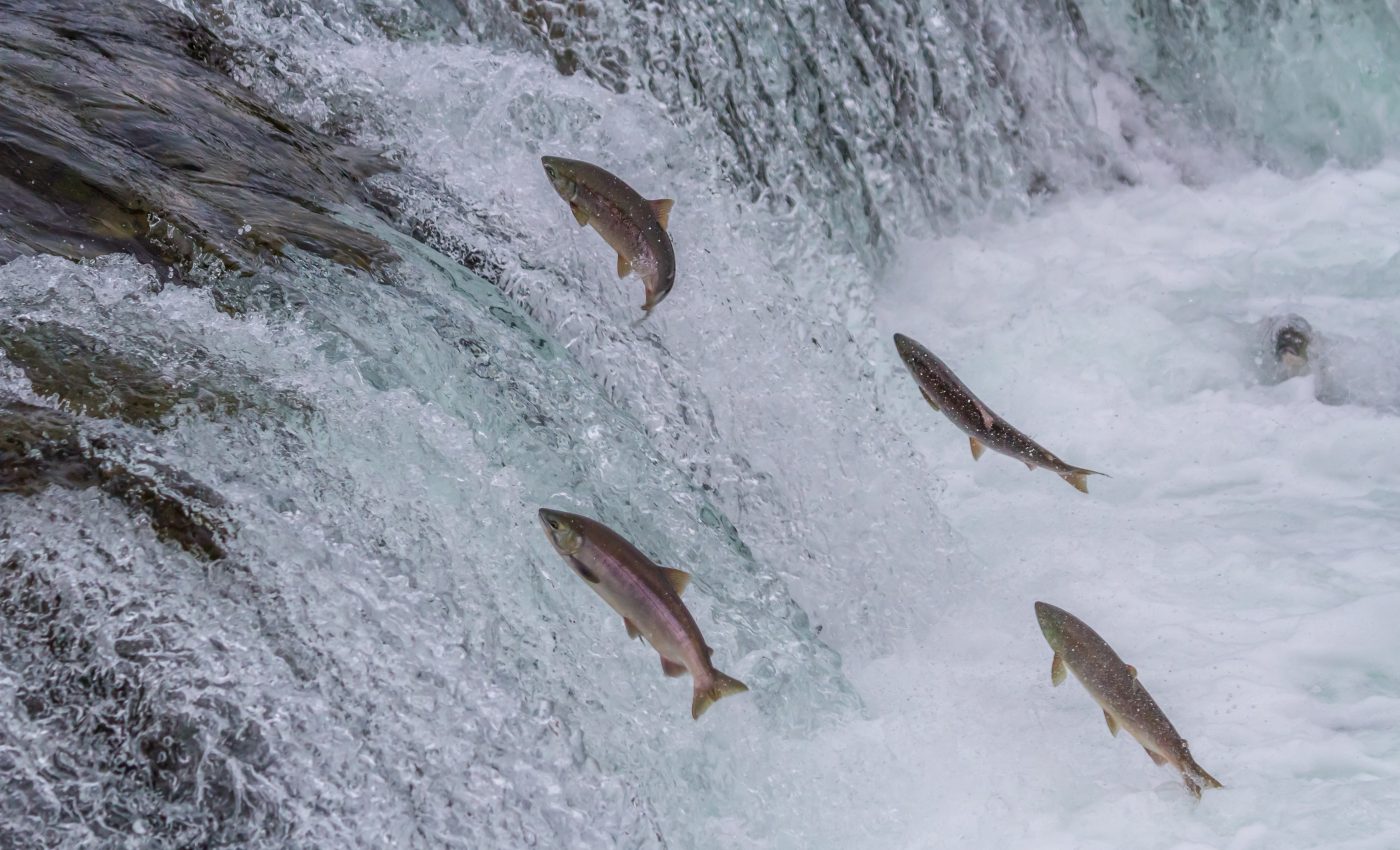
Why are Alaska's wild salmon getting smaller?
Salmon returning to rivers in Alaska have become much smaller over the last six decades as the fish are spending fewer years at sea, according to a new study from UC Santa Cruz.
Younger and smaller salmon have less value for commercial fisheries and transport fewer nutrients from the ocean to the rivers where they spawn. They also provide less food for the people who depend on them.
While it has been apparent that wild salmon in Alaska have been getting smaller in recent years, the underlying reasons have remained unclear.
For the current investigation, the researchers studied four salmon species across all regions of Alaska. They analyzed data for 12.5 million fish collected by the Alaska Department of Fish and Game over 60 years.
This massive dataset allowed the experts to analyze body size changes in Chinook, chum, coho, and sockeye salmon throughout the state.
Alaskan salmon typically spend up to seven years at sea, depending on the species, which is when they feed and grow to maturity before returning to fresh water to spawn. The results of the study showed that salmon are returning to their spawning grounds at younger ages than they have in the past, and this is the primary cause of changes in their body size.
“There are two ways they could be getting smaller – they could be growing less and be the same age but smaller, or they could be younger – and we saw a strong and consistent pattern that the salmon are returning to the rivers younger than they did historically,” said study co-author Professor Eric Palkovacs.
The researchers identified a range of factors that appear to be driving this shift, some affecting all regions and others affecting only certain species.
“There’s not a single smoking gun,” said study first author Krista Oke. “Small contributions from a lot of factors are adding up to drive these changes.”
Professor Palkovacs said that two main factors have clearly contributed to size declines across all species and regions: climate change and competition with growing numbers of wild and hatchery salmon in the ocean.
The impacts of commercial fishing were found to affect the size of some salmon types, but not others. Recovering populations of marine mammals that prey on salmon were also found to influence the size of certain species.
“We know that climate drives changes in ocean productivity, and we see a consistent signal of climate factors associated with decreasing salmon size,” said Professor Palkovacs. “Another consistent association is with the abundance of salmon in the ocean, especially pink salmon. Their abundance in the North Pacific is at historic highs due in part to hatchery production in Alaska and Asia, and they compete with other salmon for food.”
Salmon that remain in the ocean longer and grow larger have greater reproductive success, but each additional year at sea increases the risk of not returning to the spawning grounds at all.
“Natural selection has always pushed in both directions, but the balance between the two is changing, pushing harder against the older, larger salmon,” said Professor Palkovacs. “It seems that the ocean is becoming a riskier place to be.”
Oke noted that gaining a clearer understanding of what is going on in the ocean to drive this shift is a difficult challenge that will require further study.
“That’s the next hard step I hope we can get to soon,” said Oke. “It could be that they’re having to spend more time feeding, which is putting them in risky places. Lots of things could be happening to increase the overall risk of mortality in the ocean, but we weren’t able to pin that down.”
The study is published in the journal Nature Communications.
–—
By Chrissy Sexton, Earth.com Staff Writer













